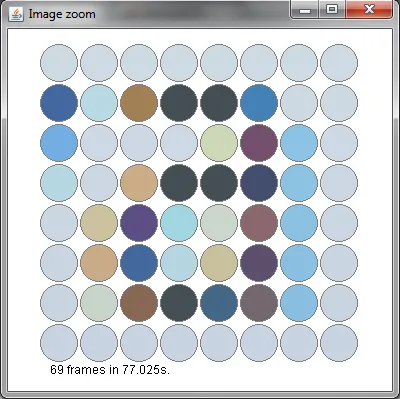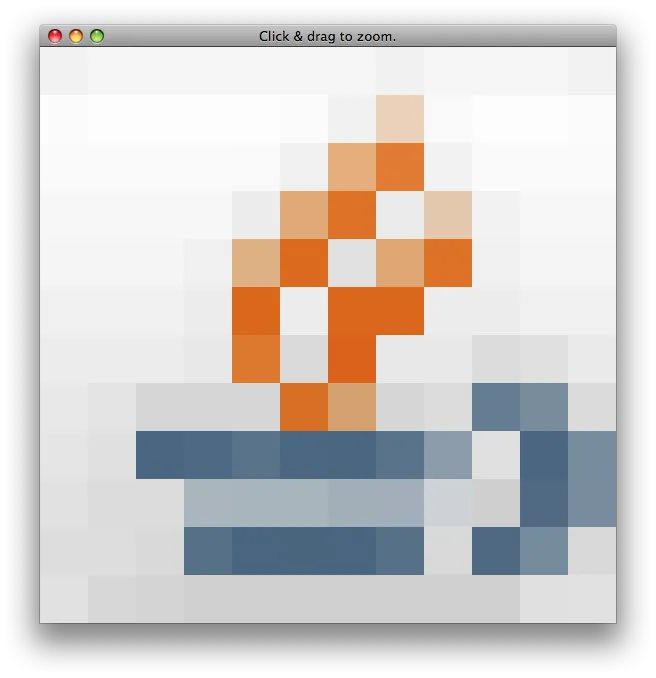我以前没有做过这个,所以显然我不擅长。在一个表单上,当前鼠标位置周围64个像素会被画得稍微大一些。问题是,它'有点'太慢了,而且我不知道从哪里开始修复。
除此之外,我创建了一个线程,当它完成时不断调用更新图形,并显示一个小的fps文本,以展示绘制速度有多快。
图像示例:(图像来自Eclipse中的字母'a')

代码示例:
@SuppressWarnings("serial")
public static class AwtZoom extends Frame {
private BufferedImage image;
private long timeRef = new Date().getTime();
Robot robot = null;
public AwtZoom() {
super("Image zoom");
setLocation(new Point(640, 0));
setSize(400, 400);
setVisible(true);
final Ticker t = new Ticker();
this.image = (BufferedImage) (this.createImage(320, 330));
addWindowListener(new WindowAdapter() {
public void windowClosing(WindowEvent we) {
t.done();
dispose();
}
});
try {
robot = new Robot();
} catch (AWTException e) {
e.printStackTrace();
}
t.start();
}
private class Ticker extends Thread {
public boolean update = true;
public void done() {
update = false;
}
public void run() {
try {
while (update == true) {
update(getGraphics());
// try {
// Thread.sleep(200);
// } catch (InterruptedException e) {
// e.printStackTrace();
// return;
// }
}
} catch (Exception e) {
update=false;
}
}
}
public void update(Graphics g) {
paint(g);
}
boolean isdone = true;
public void paint(Graphics g) {
if (isdone) {
isdone=false;
int step = 40;
Point p = MouseInfo.getPointerInfo().getLocation();
Graphics2D gc = this.image.createGraphics();
try {
for (int x = 0; x < 8; x++) {
for (int y = 0; y < 8; y++) {
gc.setColor(robot.getPixelColor(p.x - 4 + x, p.y
- 4 + y));
gc.fillOval(x * step, y * step, step - 3, step - 3);
gc.setColor(Color.GRAY);
gc.drawOval(x * step, y * step, step - 3, step - 3);
}
}
} catch (Exception e) {
e.printStackTrace();
}
gc.dispose();
isdone = true;
iter++;
}
g.drawImage(image, 40, 45, this);
g.setColor(Color.black);
StringBuilder sb = new StringBuilder();
sb.append(iter)
.append(" frames in ")
.append((double) (new Date().getTime() - this.timeRef) / 1000)
.append("s.");
g.drawString(sb.toString(), 50, 375);
}
int iter = 0;
}
修改内容如下:
* 添加了"gc.dispose();"代码
* 添加了"isdone"变量,确保重绘不会比必要的更频繁
* 添加此链接到thrashgod源码重写中
* 添加此链接到thrashgod源码重写2中
